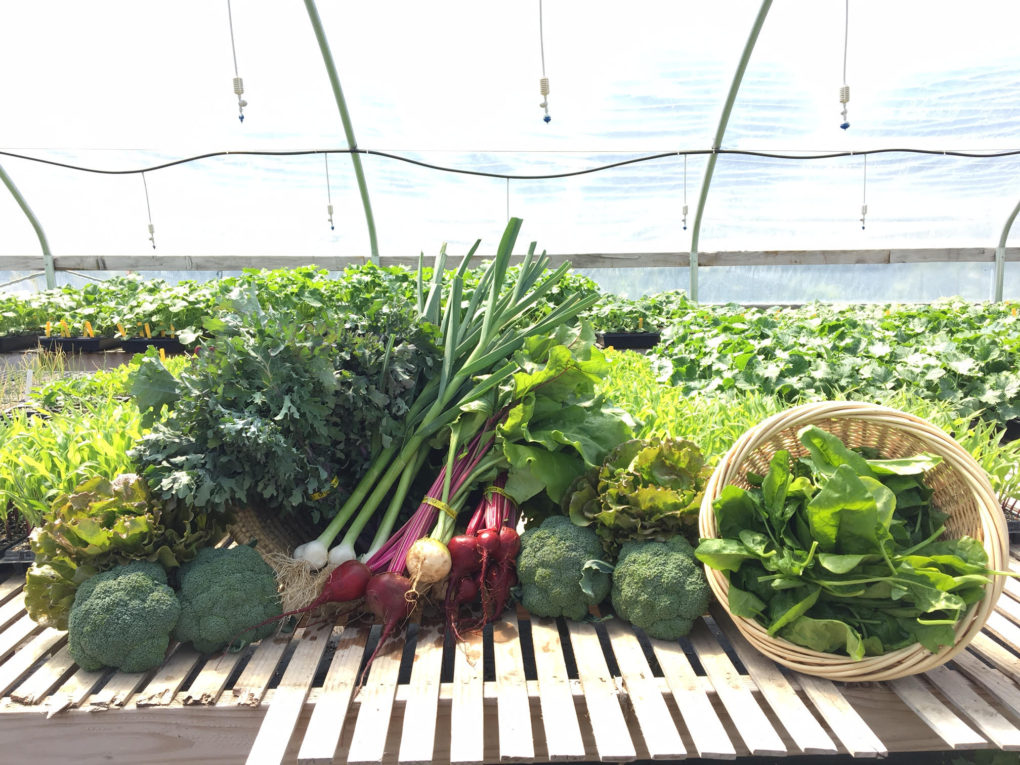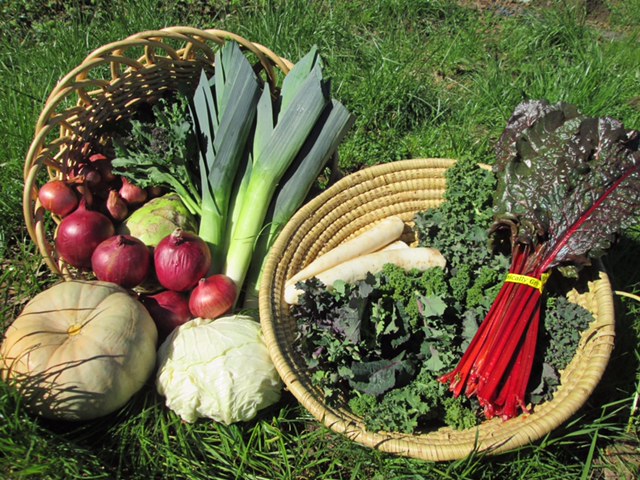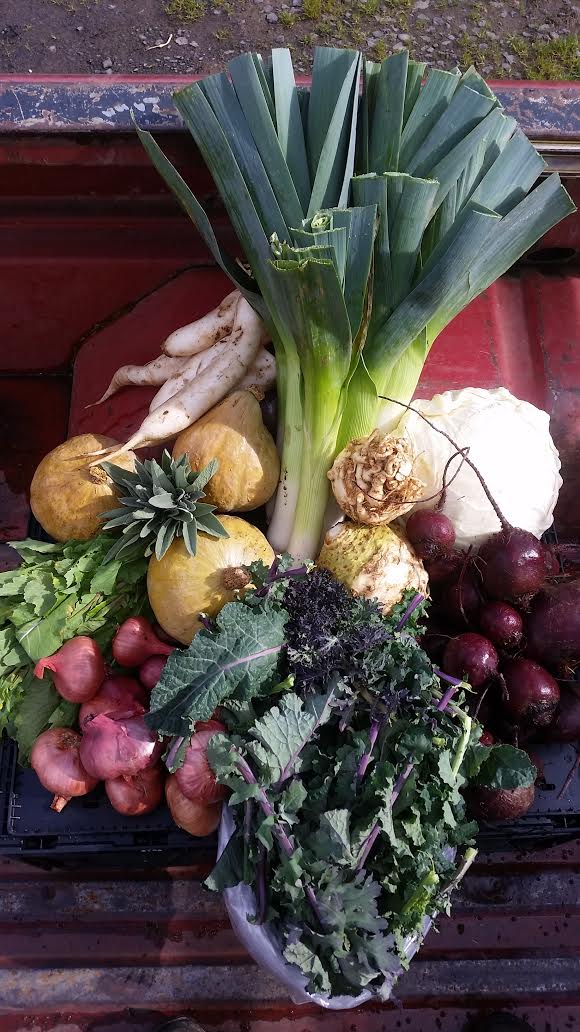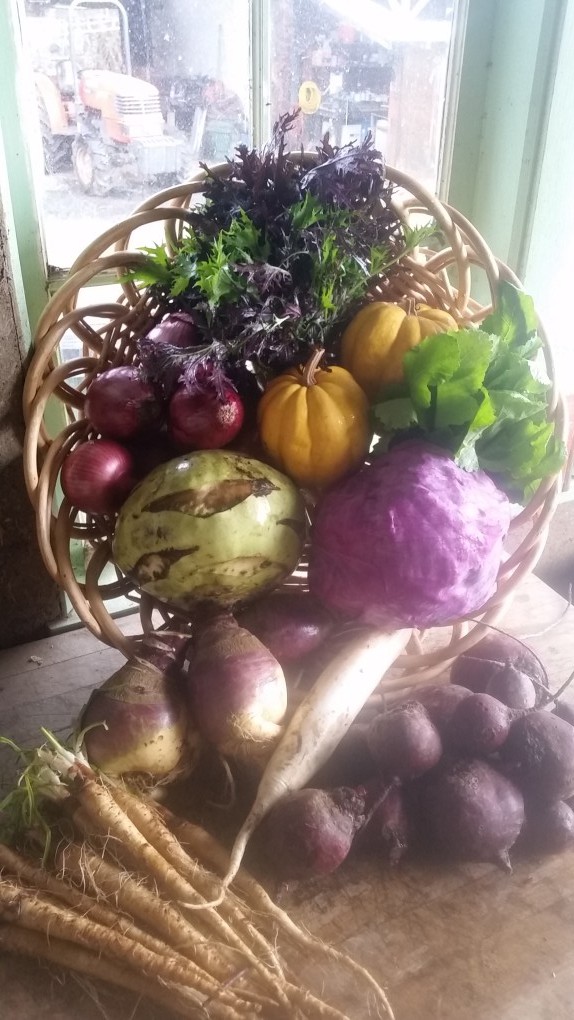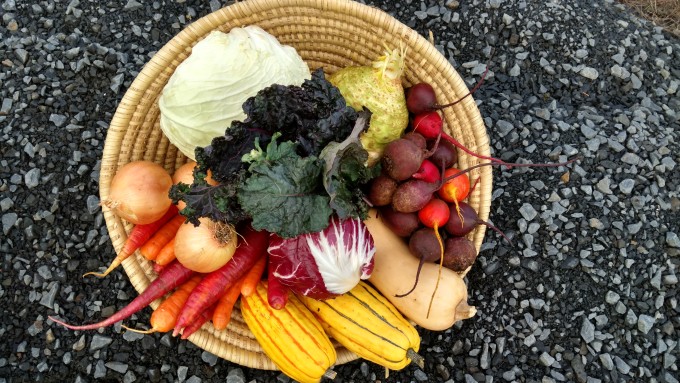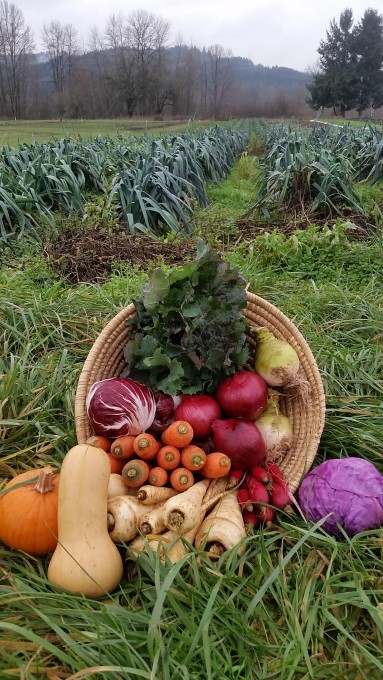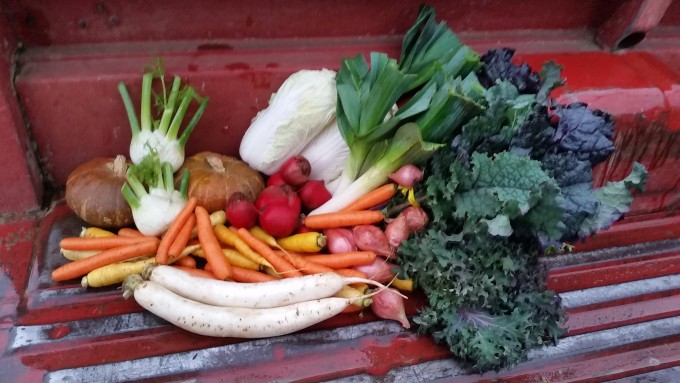In Your Share This Week
- Beets
- Broccoli
- Green Garlic
- Kale
- Lettuce
- Spinach
Crop Highlights
Beets: This spring we did a trial planting of root crops in our greenhouses in order to get you some heartier veggies sooner in the season. We direct seeded our beets in the greenhouse back in mid-March. We also conducted a transplanted beet trial- with great success! Some specialty beets germinate very poorly in cooler soil temperatures, so we gave them a heated boost by seeding them into flats in our heated greenhouse. Last year we began growing a white beet variety that tastes great and has very nice greens- which also loved the heated greenhouse. This week your beet bunches feature a mixture of red and white beets with big beautiful greens.
Broccoli: This is a tricky crop to get the timing right on…broccoli seems to have a life all its own. We space our seeding dates apart in hopes of providing a continual supply of broccoli in the spring, which sometimes works and sometimes doesn’t! The great news is that our second planting of broccoli caught up with the first one, so you get to enjoy a bountiful amount of broccoli this week. We top ice the crowns immediately after harvest, so they keep quite well in the fridge. The variety we grow has a fairly meaty stem, which is my favorite part- you can use most (often all) of the stem along with the florets. Just peel the outer layer if it seems tough at all and cook a tad longer than the florets.
Green Garlic: This week we have our second and last fresh garlic distribution- its a little larger and more developed than Week 1, but you can still use a good deal of the green stalks so long as you peel it sufficiently.
Spinach: Most folks are familiar with the little baby spinach leaves found in the grocery store- but if you let the spinach keep growing, some AMAZING things happen. The leaves get really big, and the spinach develops a sweet and delectable flavor that can’t be found in baby spinach. Our processing equipment tends to crack and break the leaves and stems on spinach, so we pack it out as-is and unwashed to keep it nicer. Rinse in cool water before using to remove any soil or grit.
Summer Fun with the Sauvie Island Center
In 2005 Sauvie Island Organics’ owner Shari Raider co-founded the Sauvie Island Center. The Center serves elementary school youth of Portland by providing hands-on educational field trips. These field trips take place on our farm and the adjacent 120 acre Howell Territorial Park. The curriculum includes Soil Investigations, Plant Parts Investigations, Wildlife & the Food Chain exploration & digging in the Grow Lunch Garden. Through these programs, the Center seeks to increase the food, farm and environmental literacy of the next generation.
National Pollinator Week is June 20 – 26 and the Sauvie Island Center invites you on June 18th from 10am to 1pm for a Pollination Celebration. During this family-friendly event you will search the native hedgerow for pollinators, taste honey and find out how bees use their bodies to gather pollen. Pack a picnic lunch and enjoy the beautiful grounds of Howell Territorial Park. Registration is requested, but not required.
There are also few spaces left for Farm Camp at Sauvie Island Center (various weeks). Kids will spend a week exploring our farm and adjacent grounds of Metro’s Howell Territorial Park. For information or to register visit Farm Camp.
Or join the fun at the Center’s 8th annual Barn Dance & Barbecue, on July 30th from 4:30pm to 8pm. Tickets can be bought on-line. You will certainly see a number of your farmers kicking up their heels!

